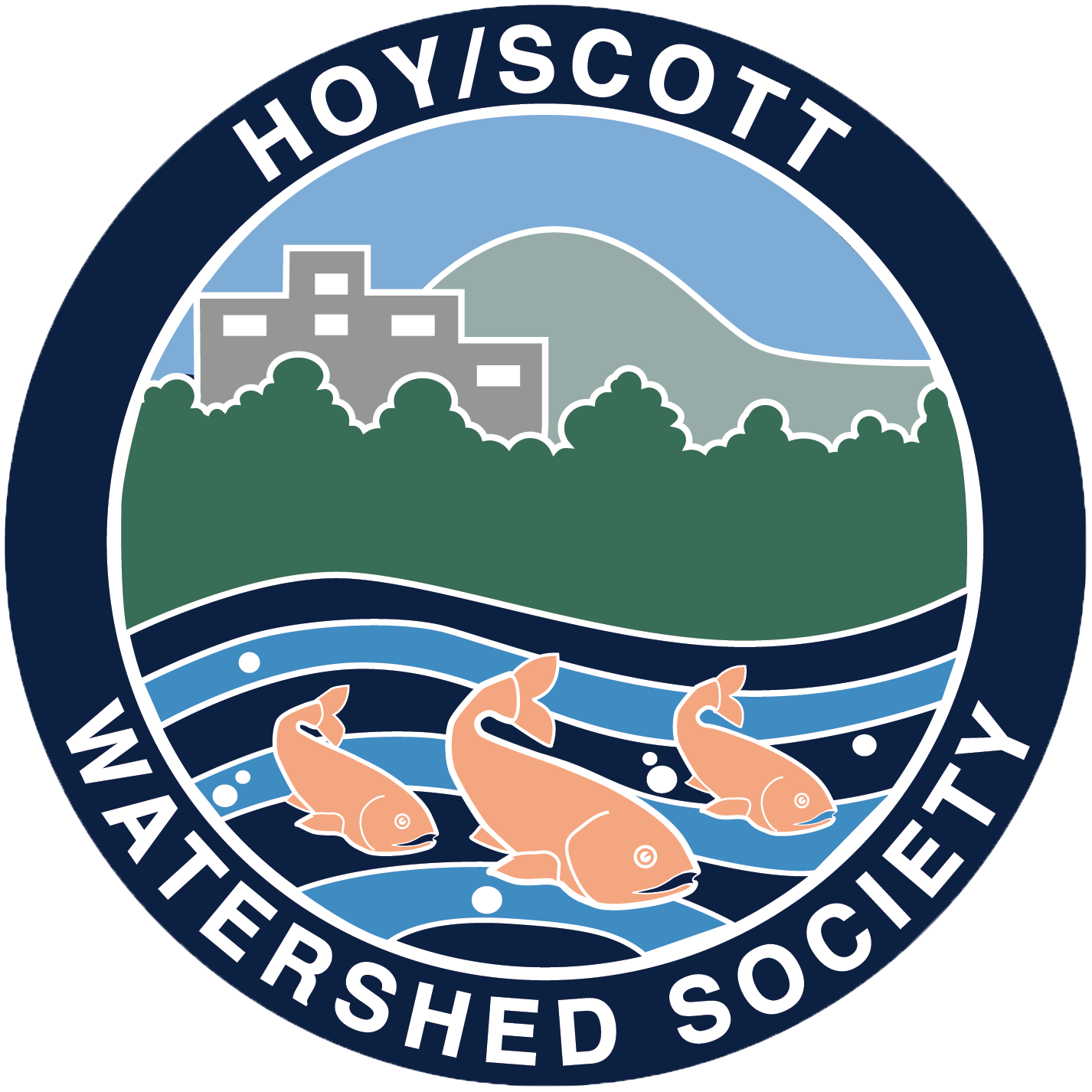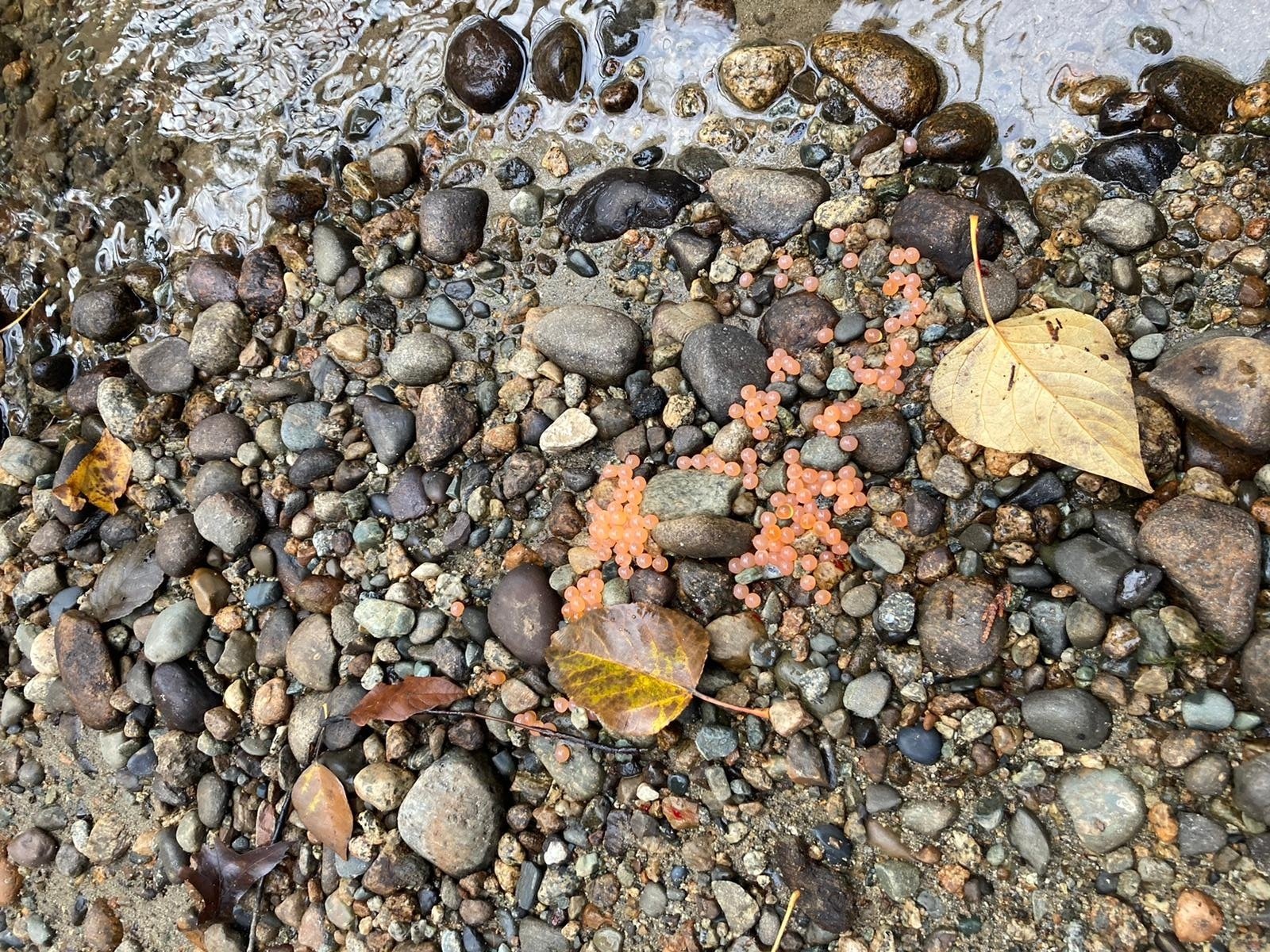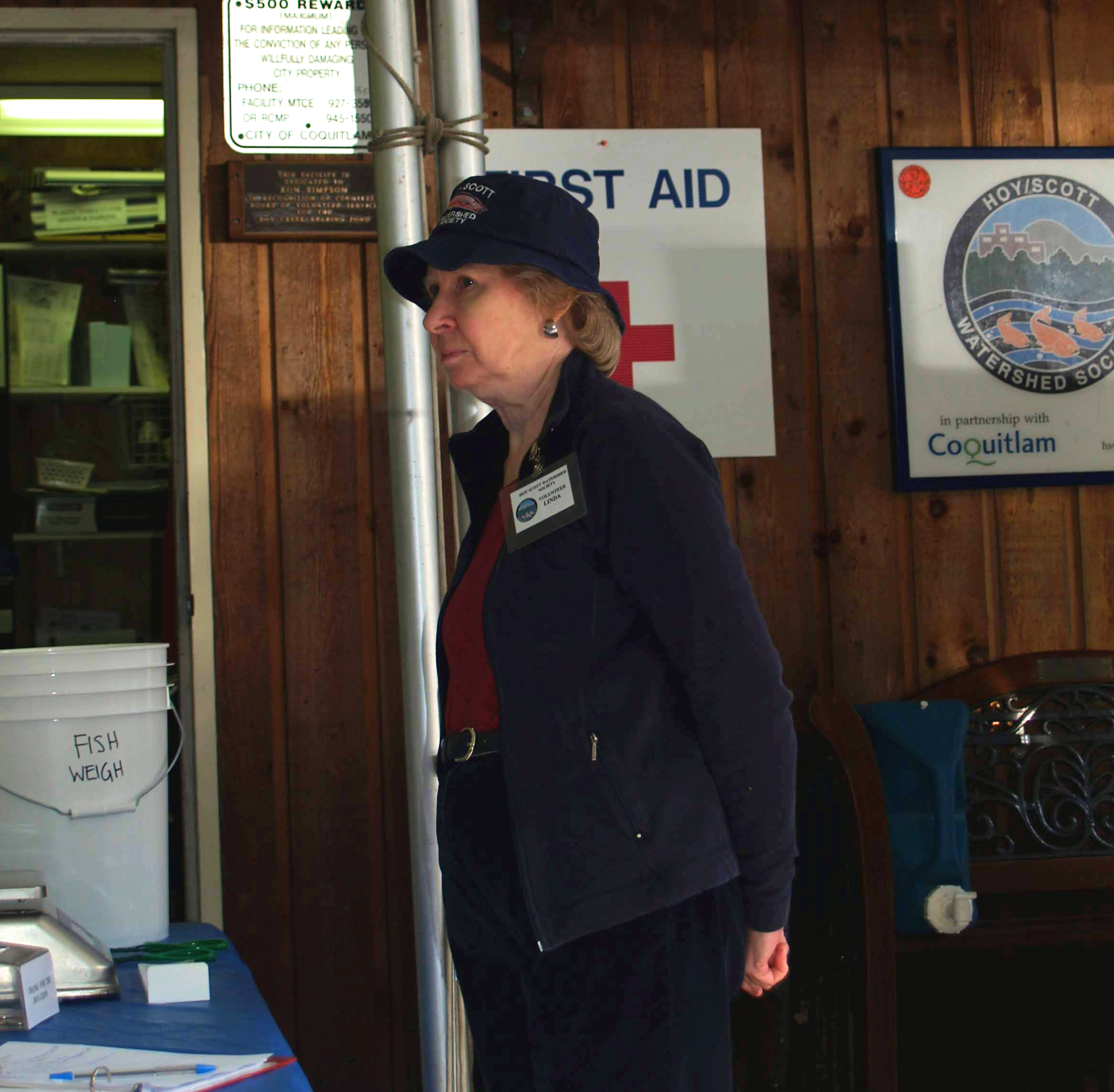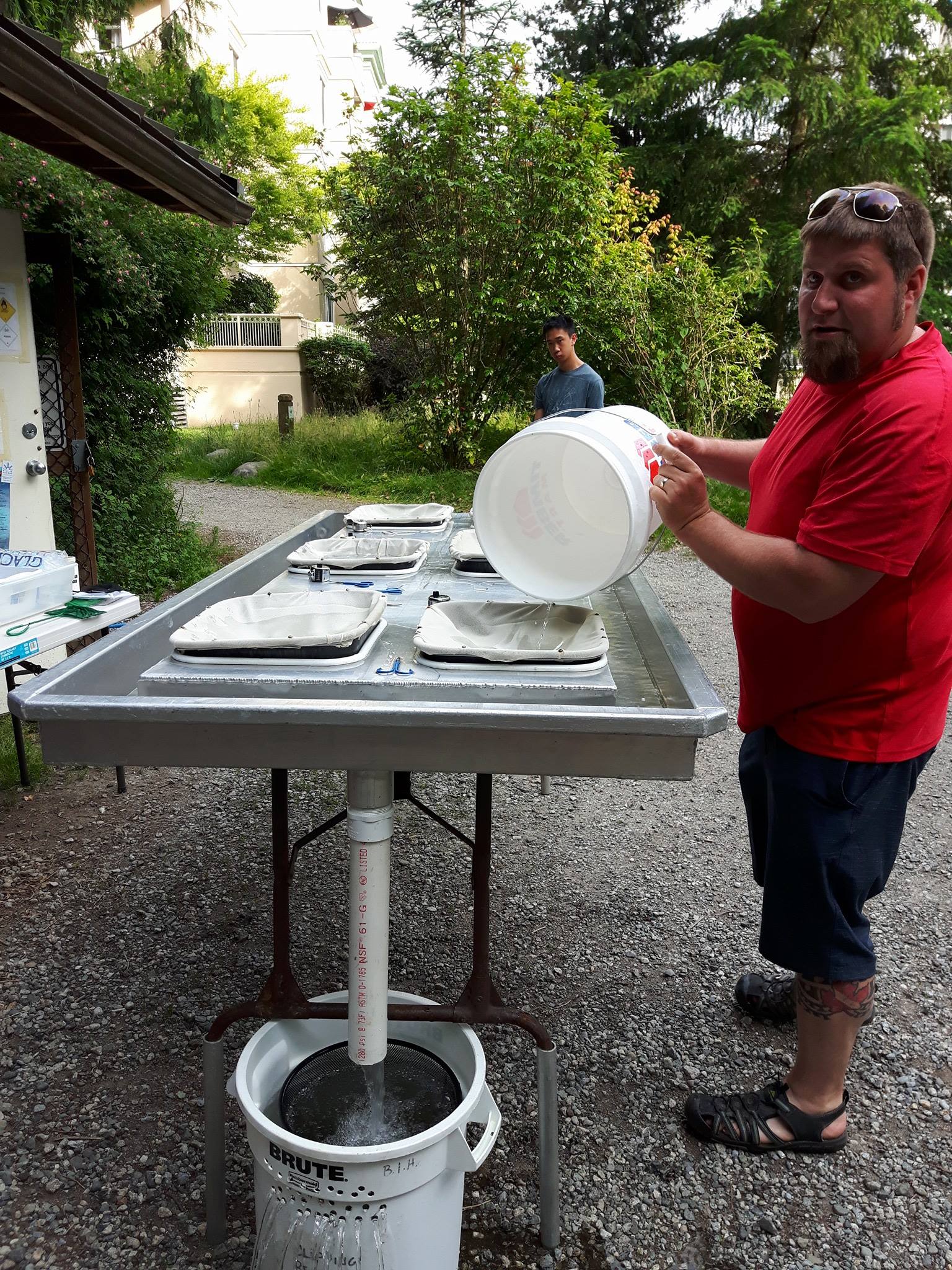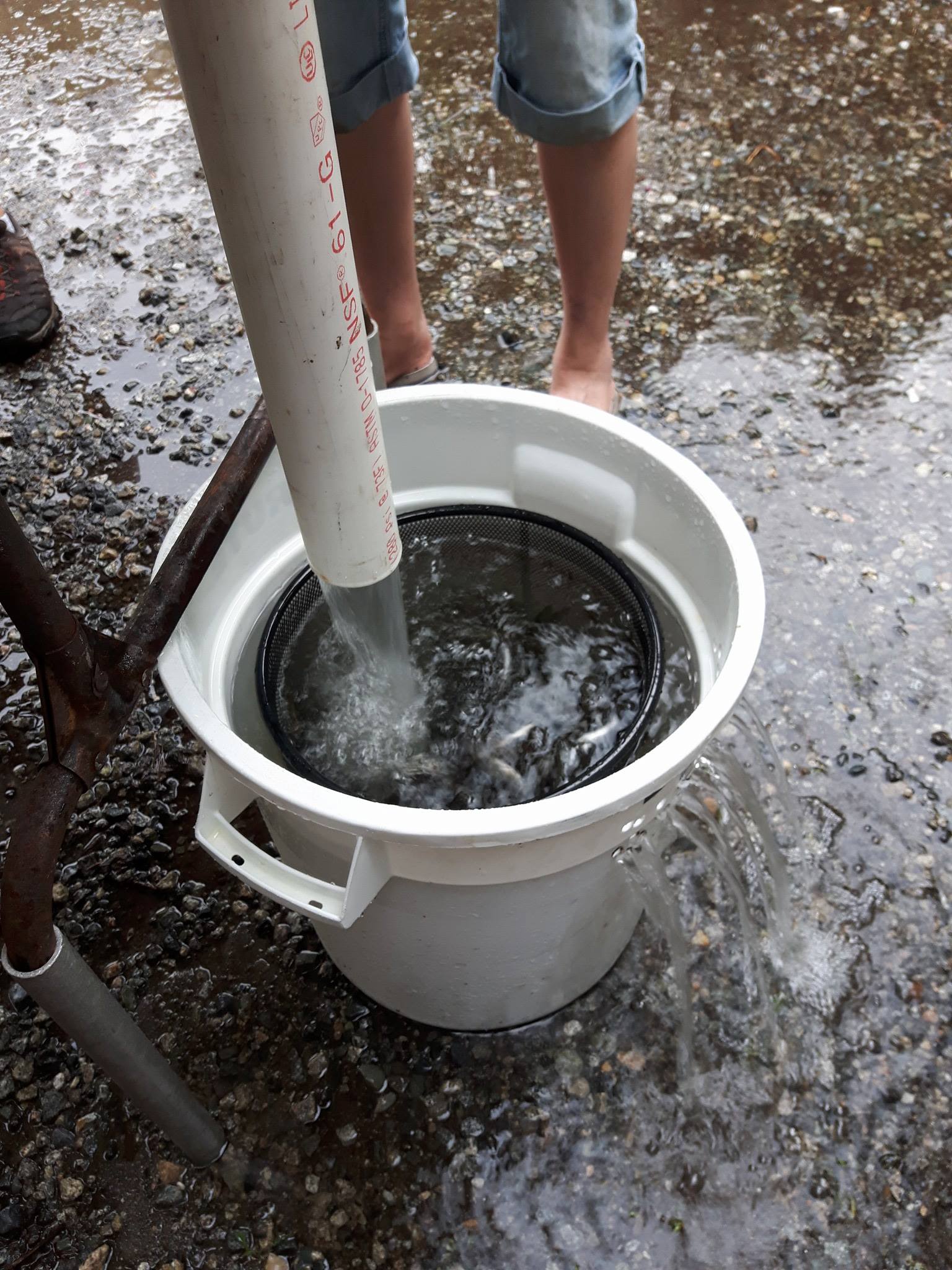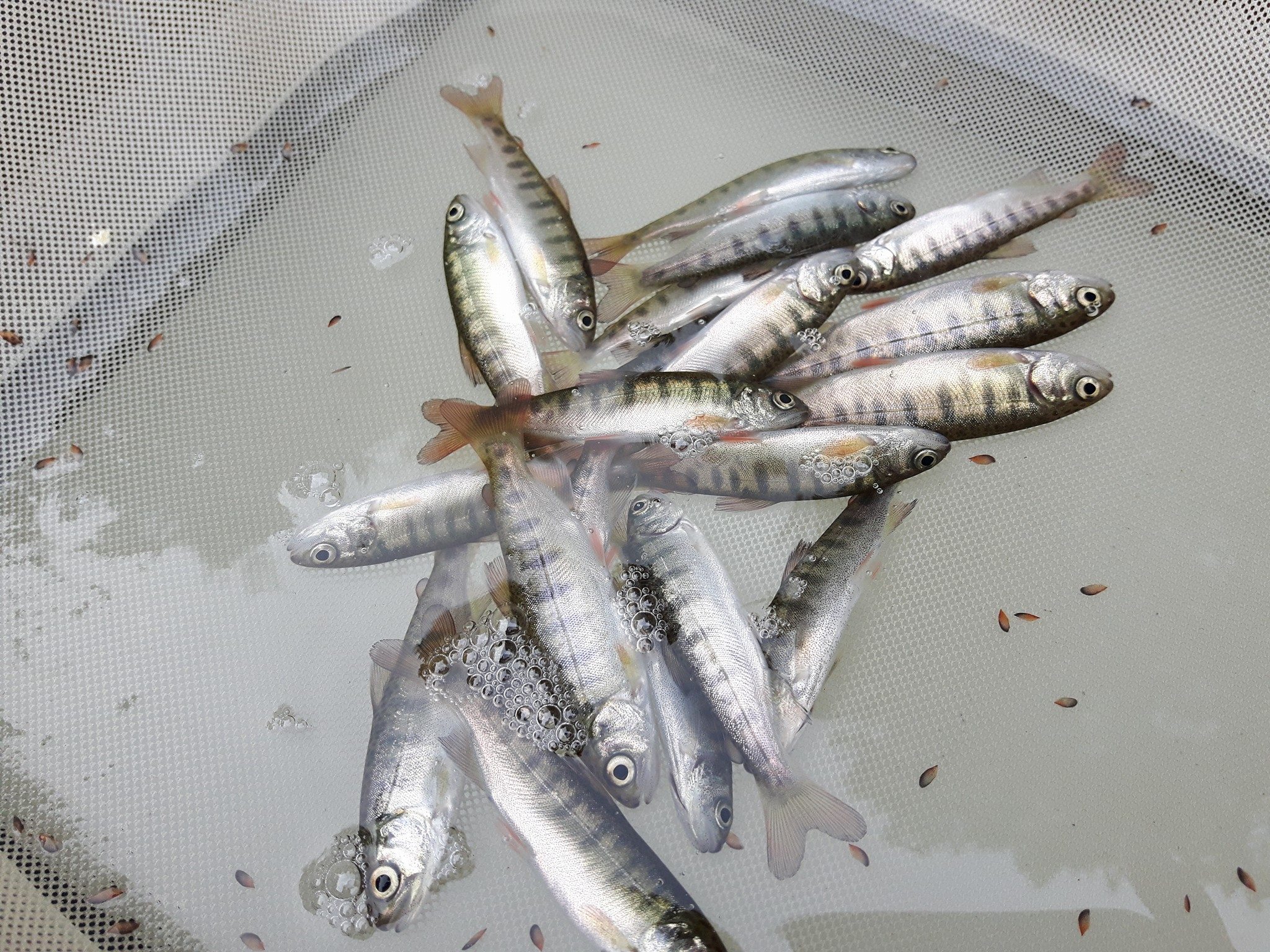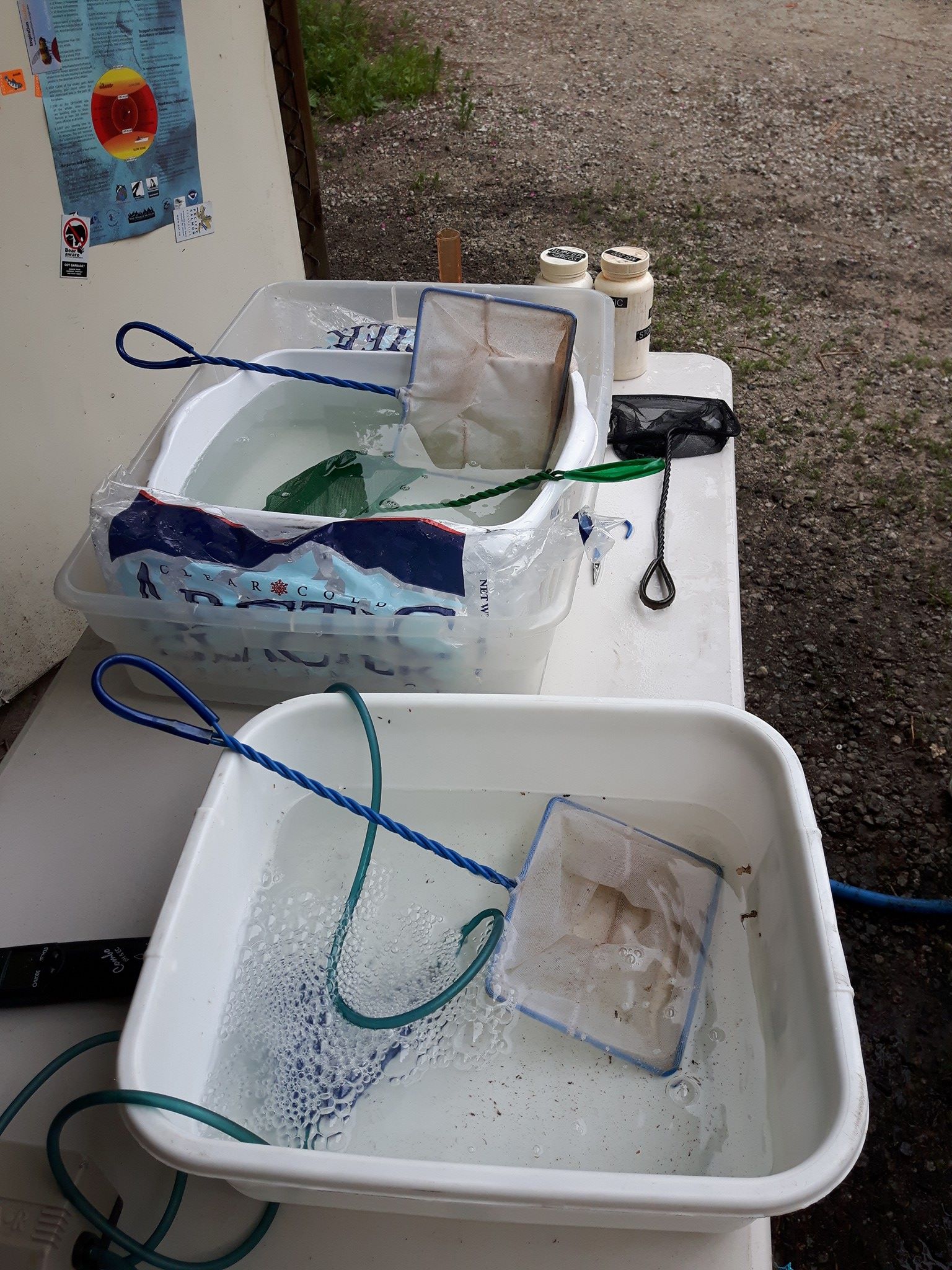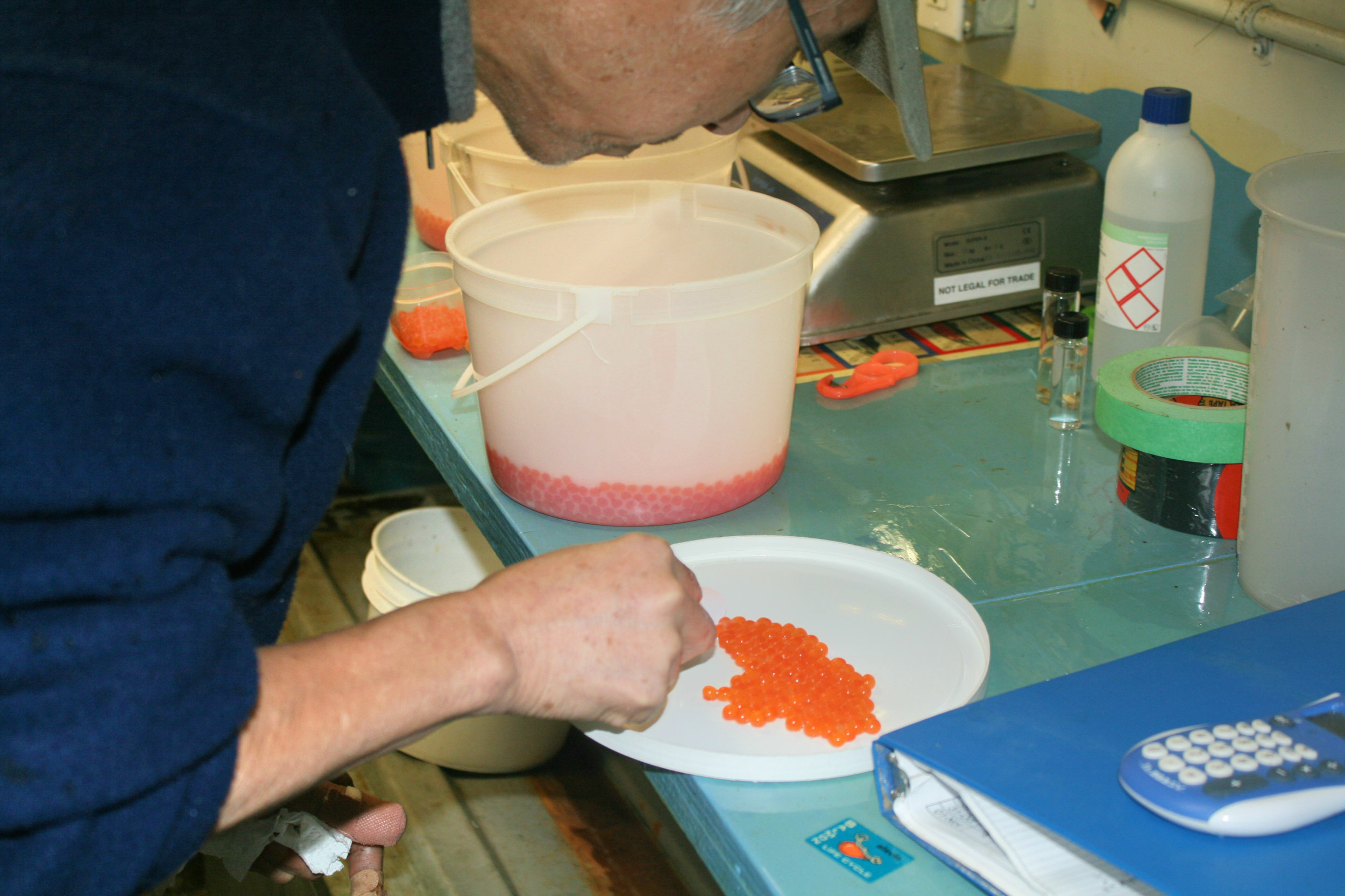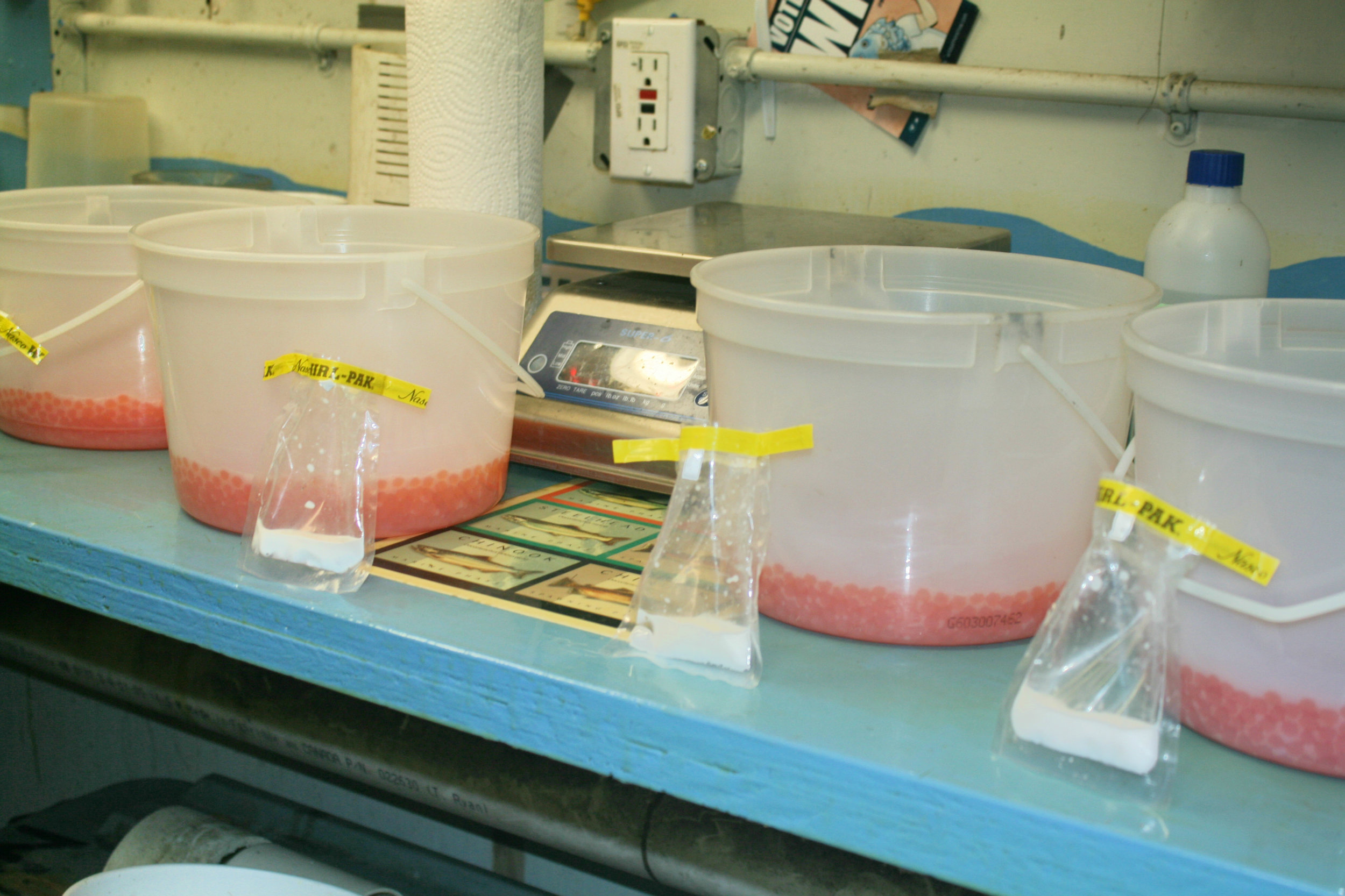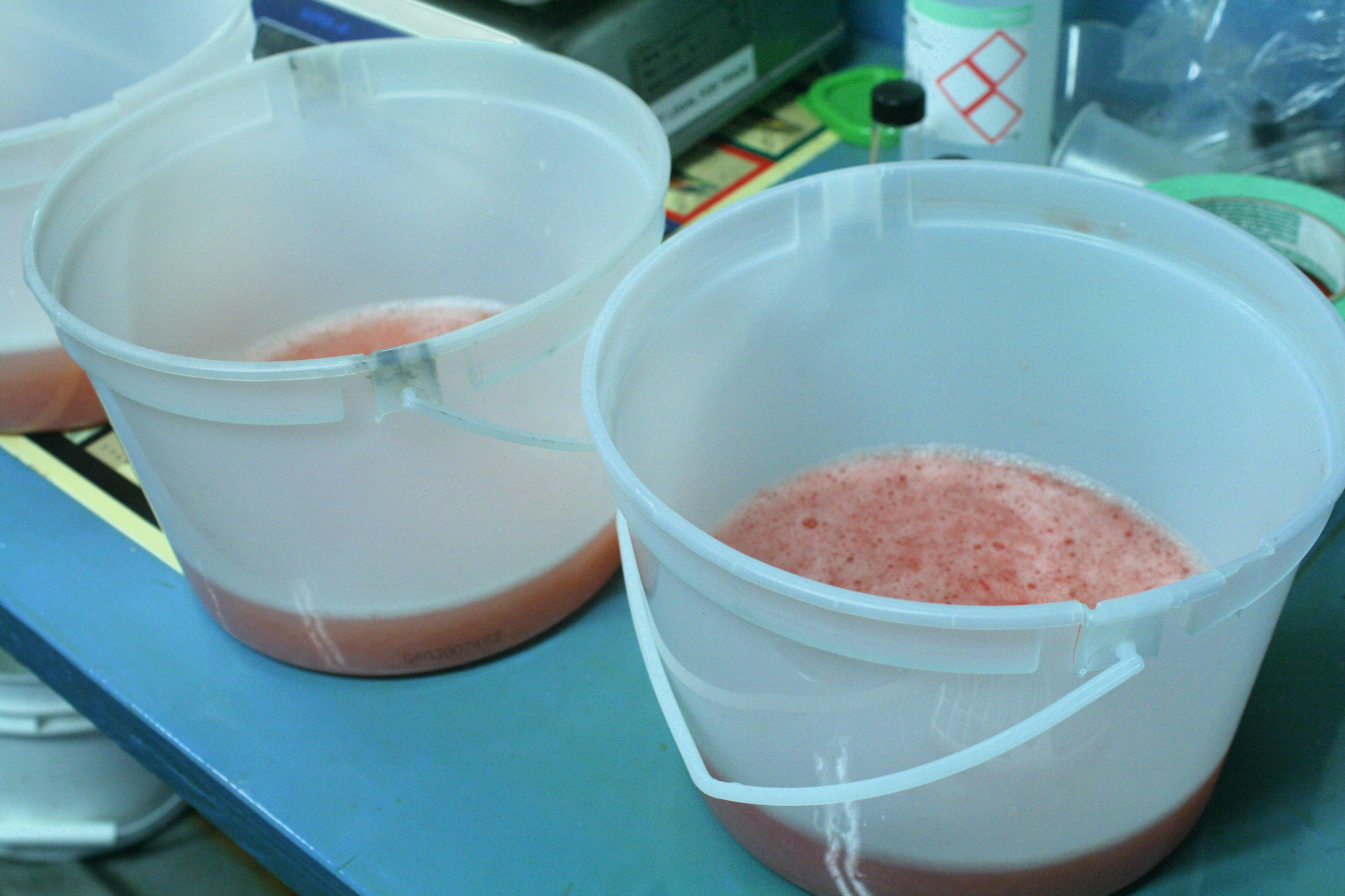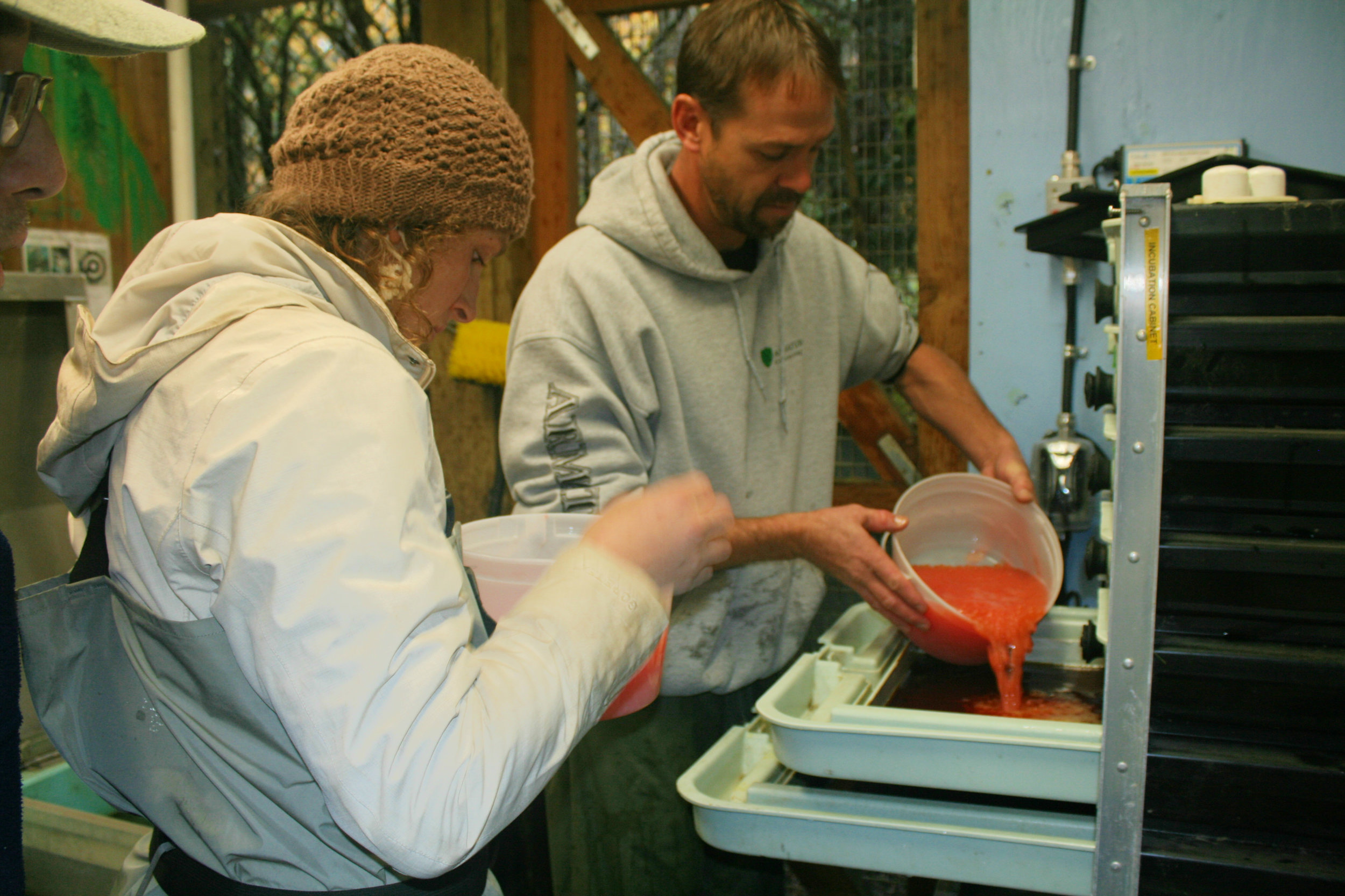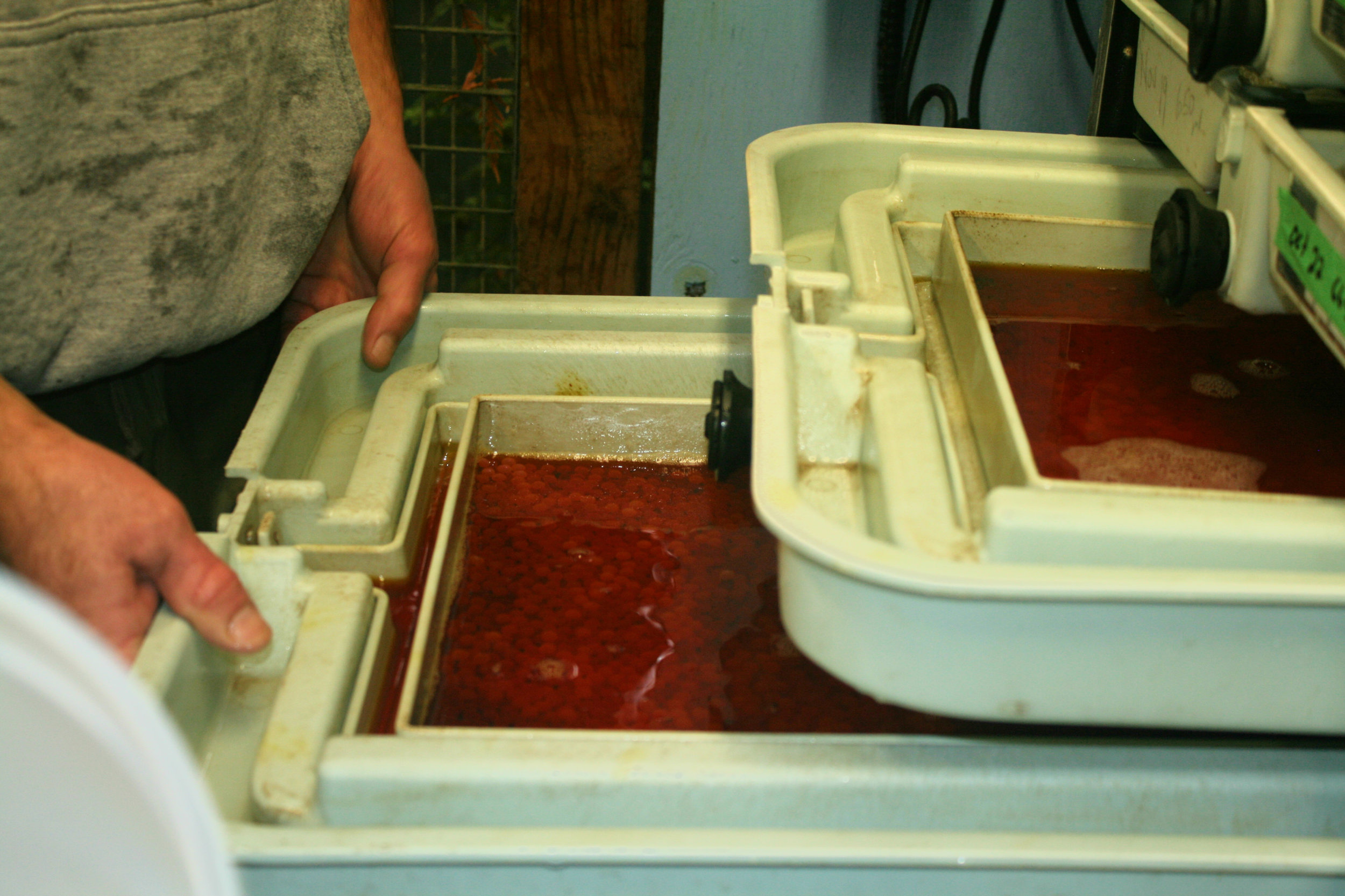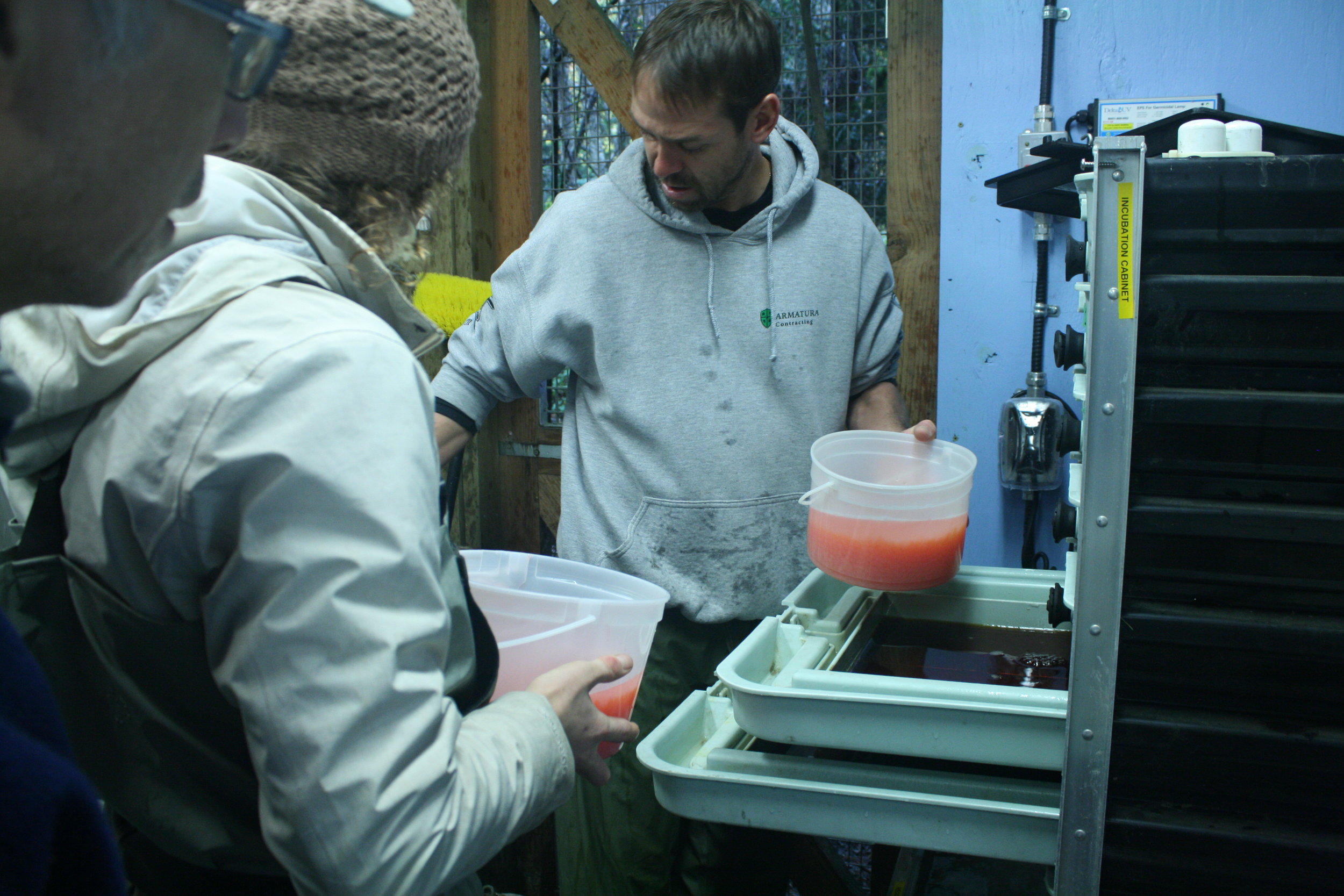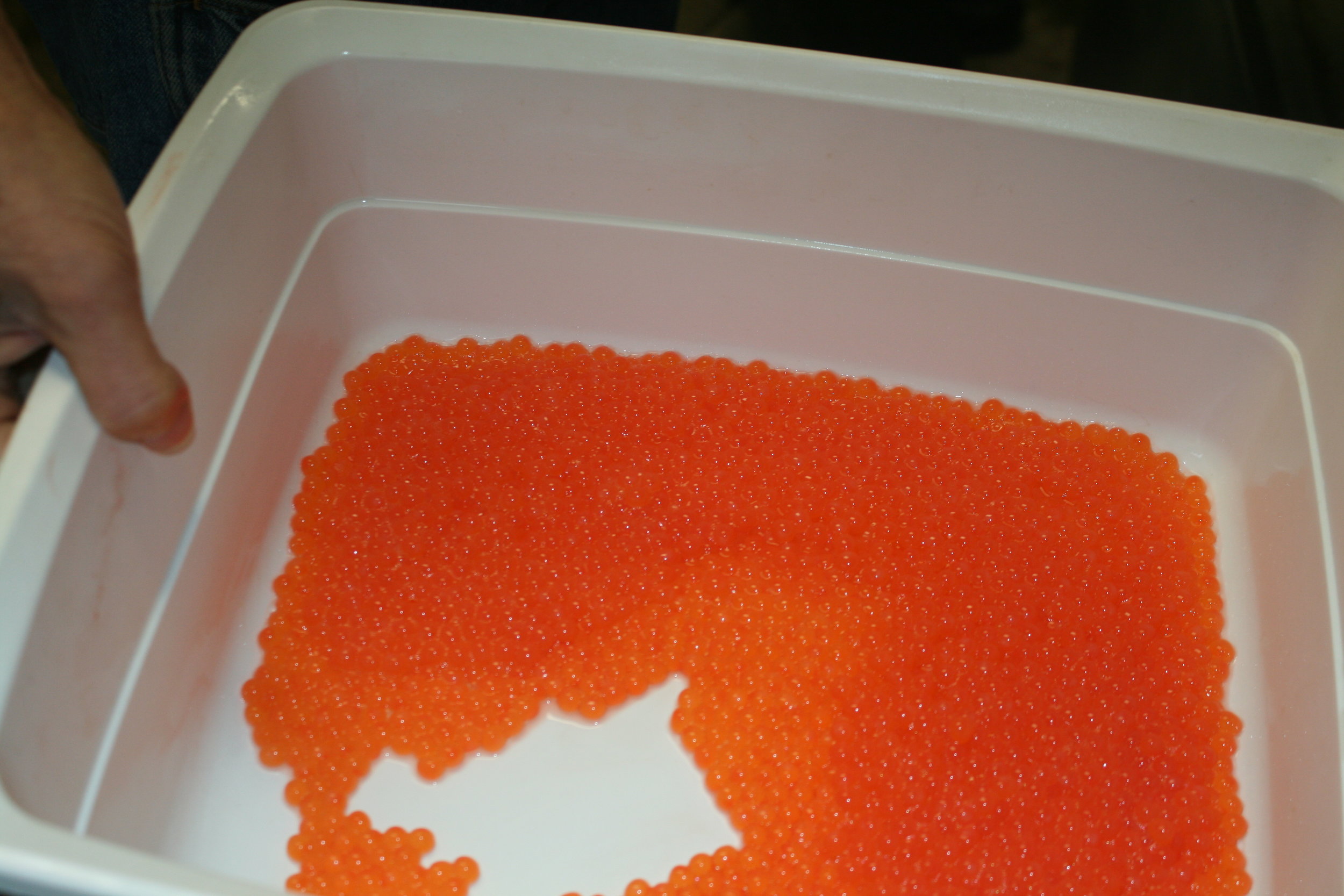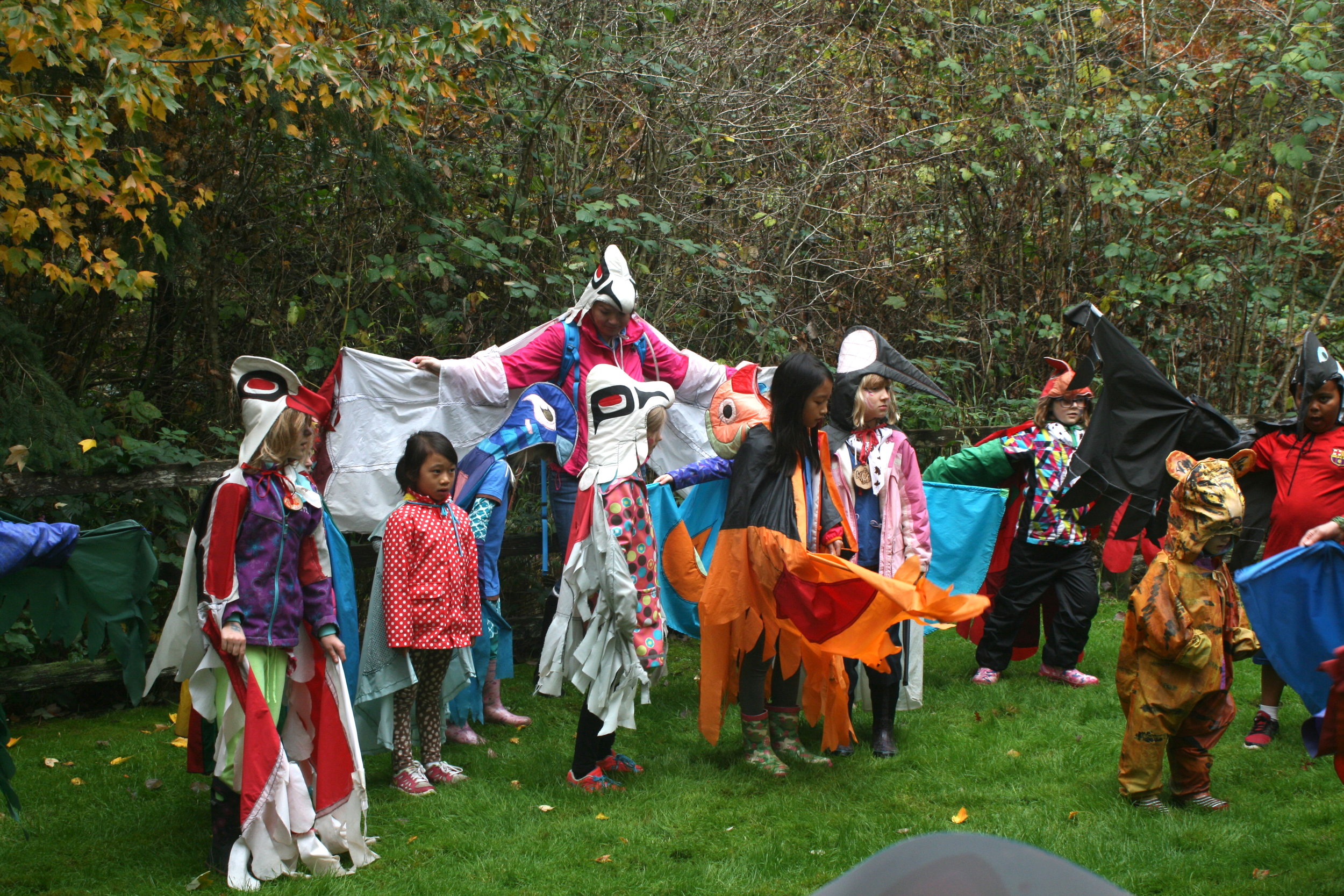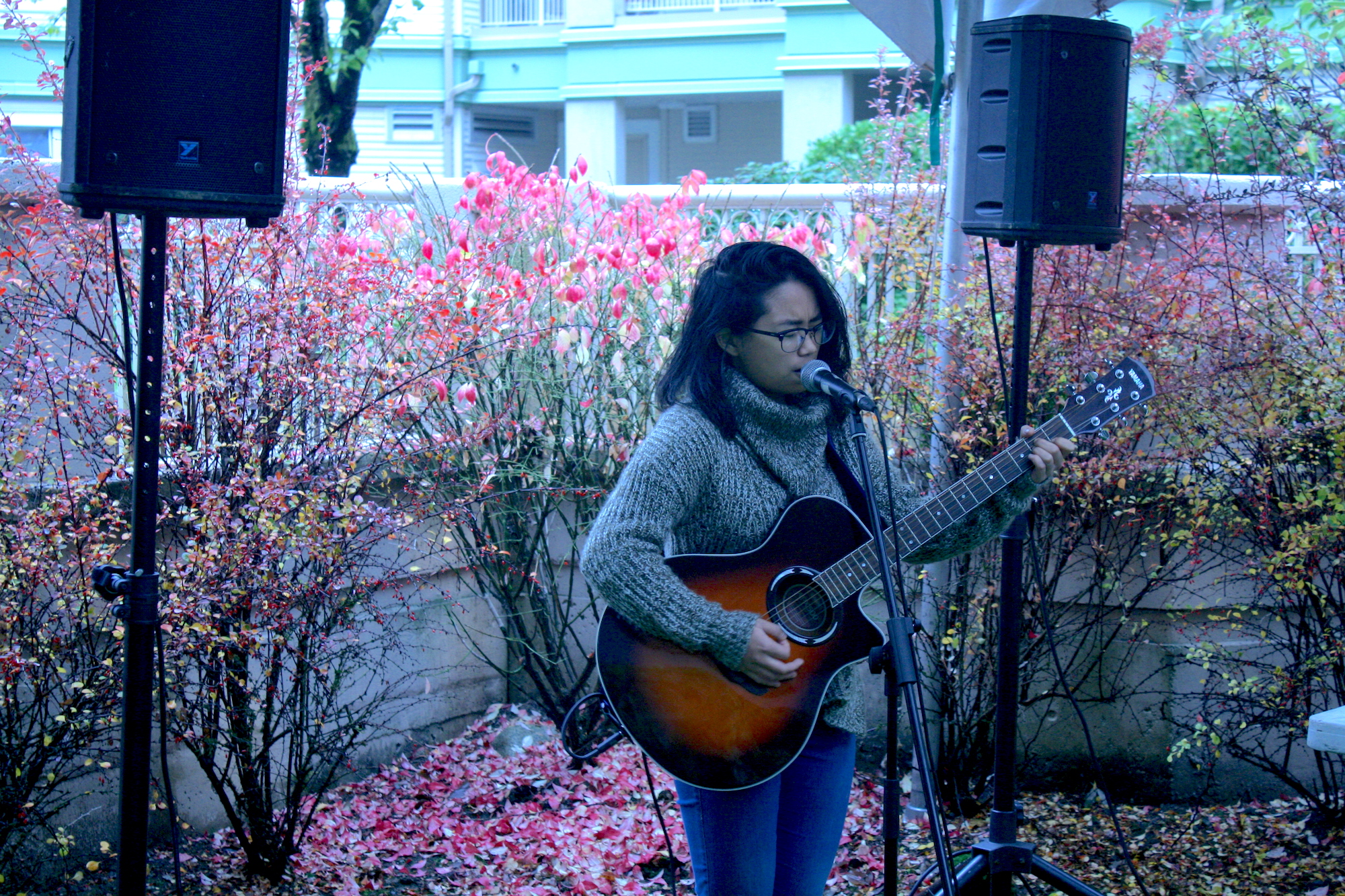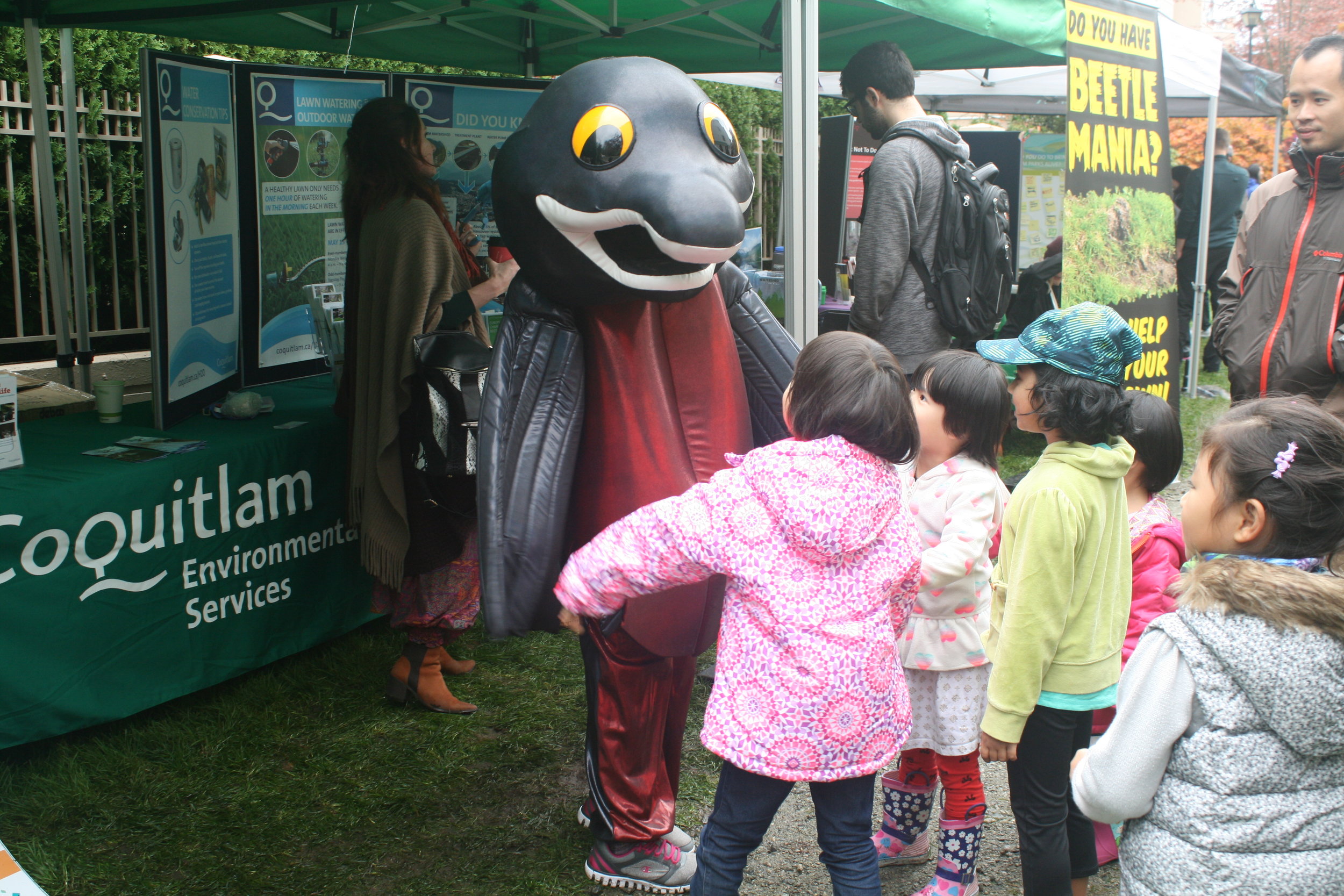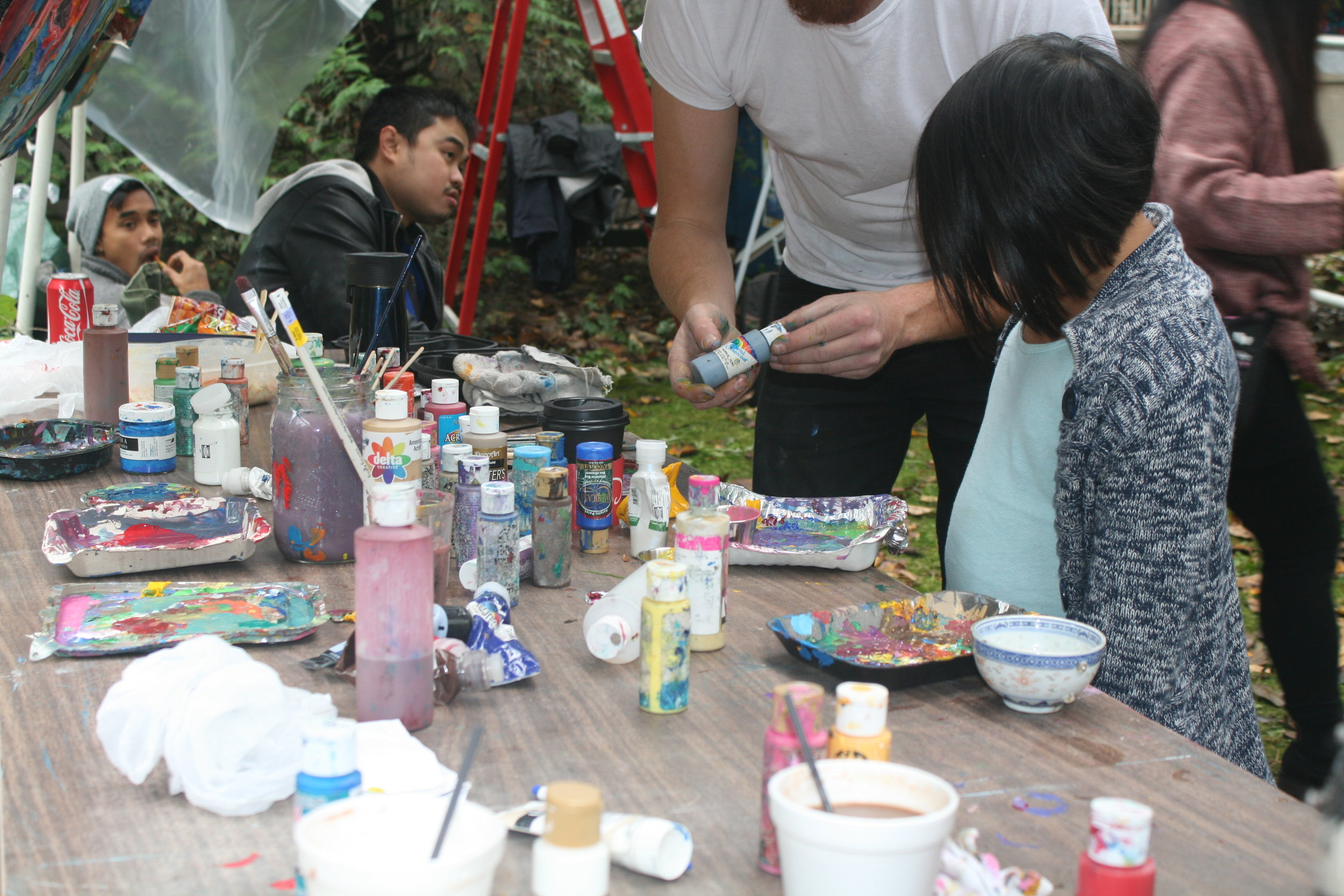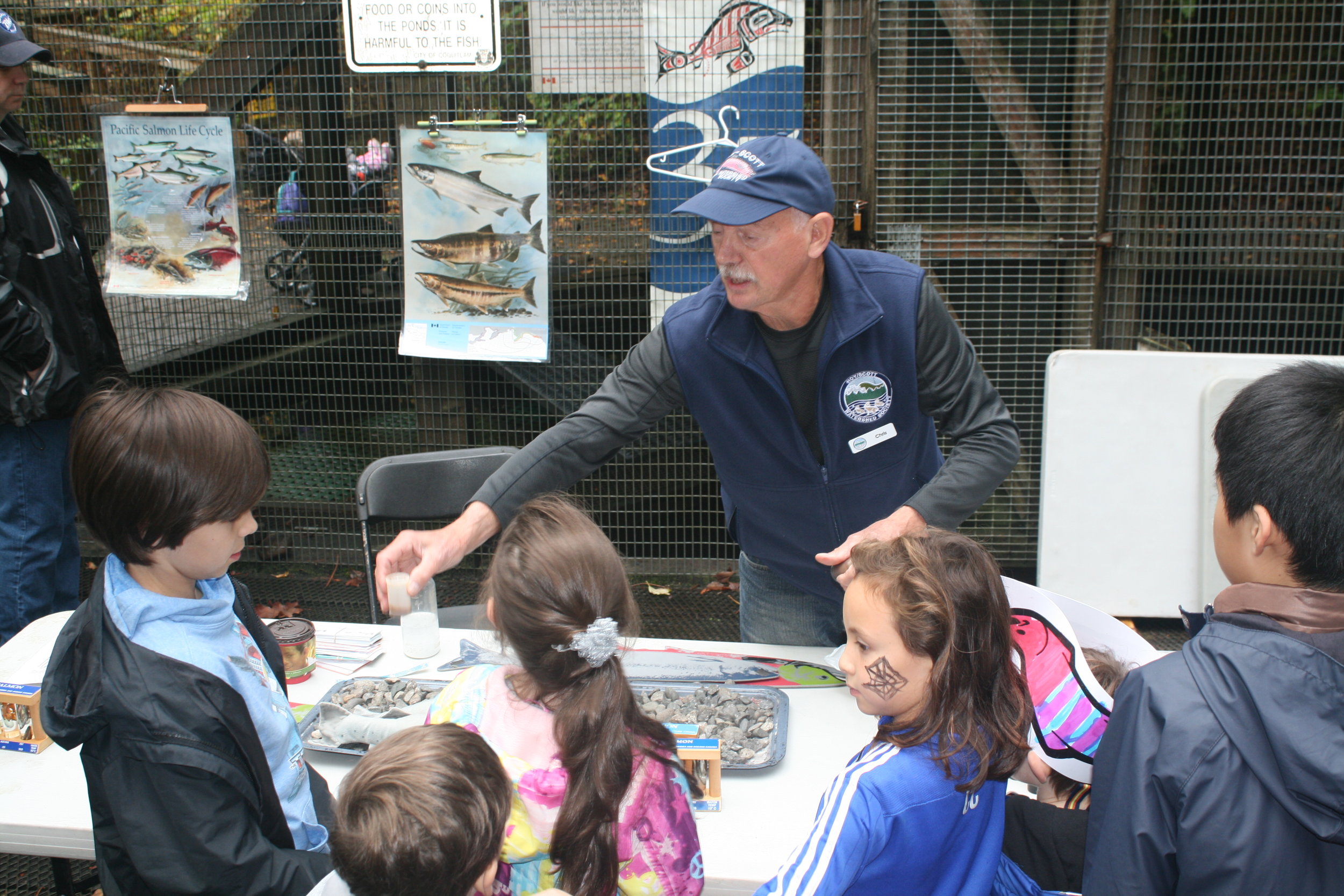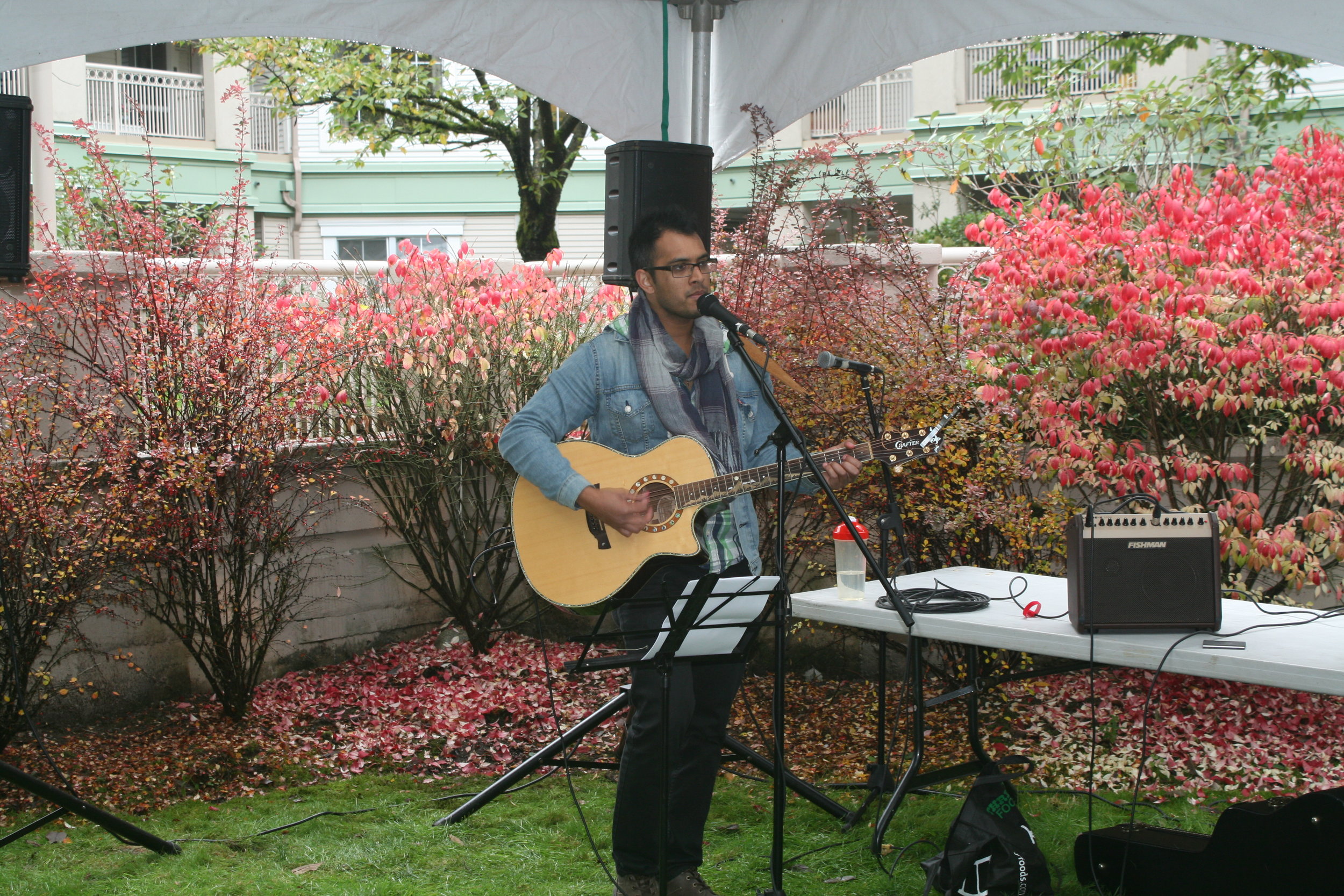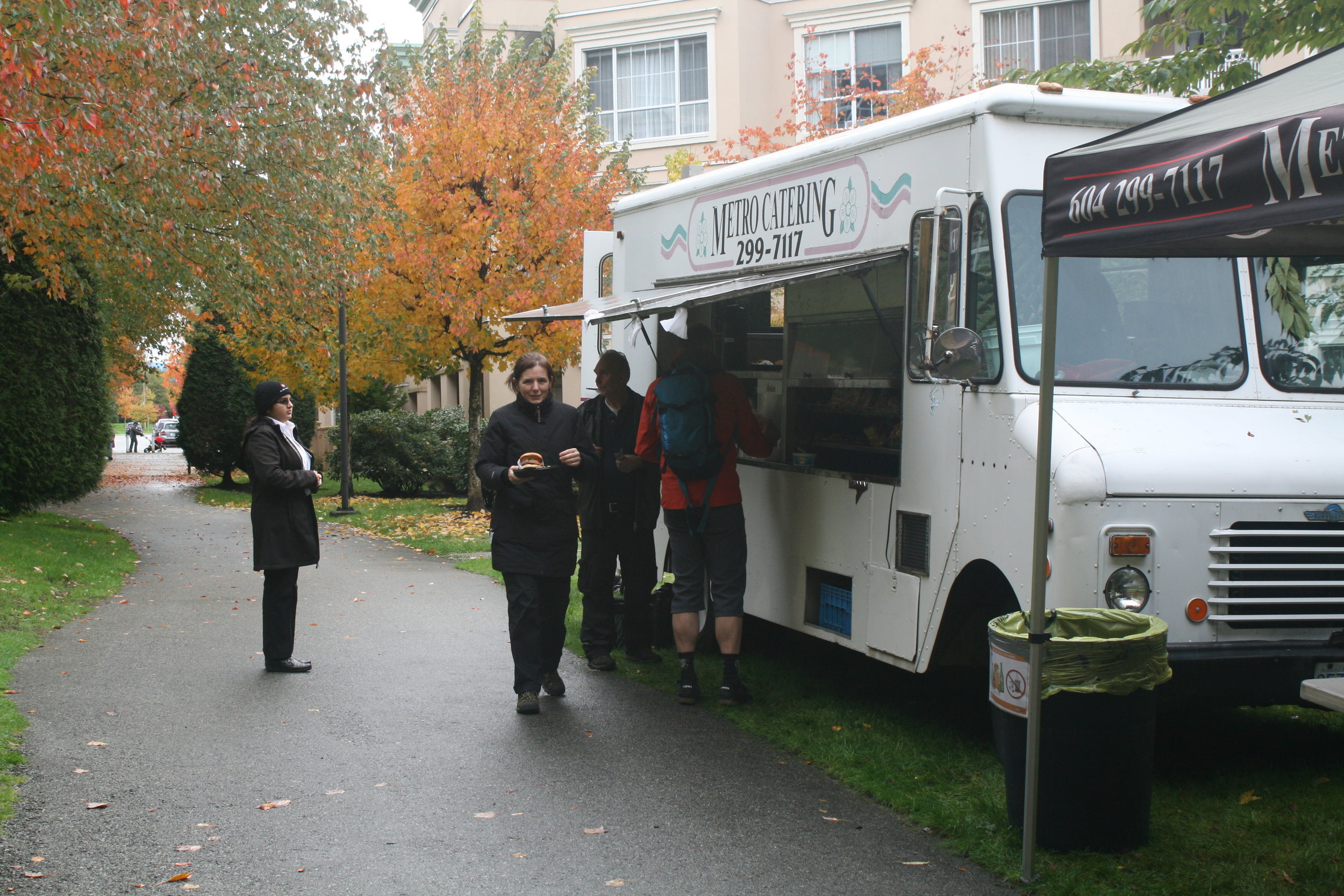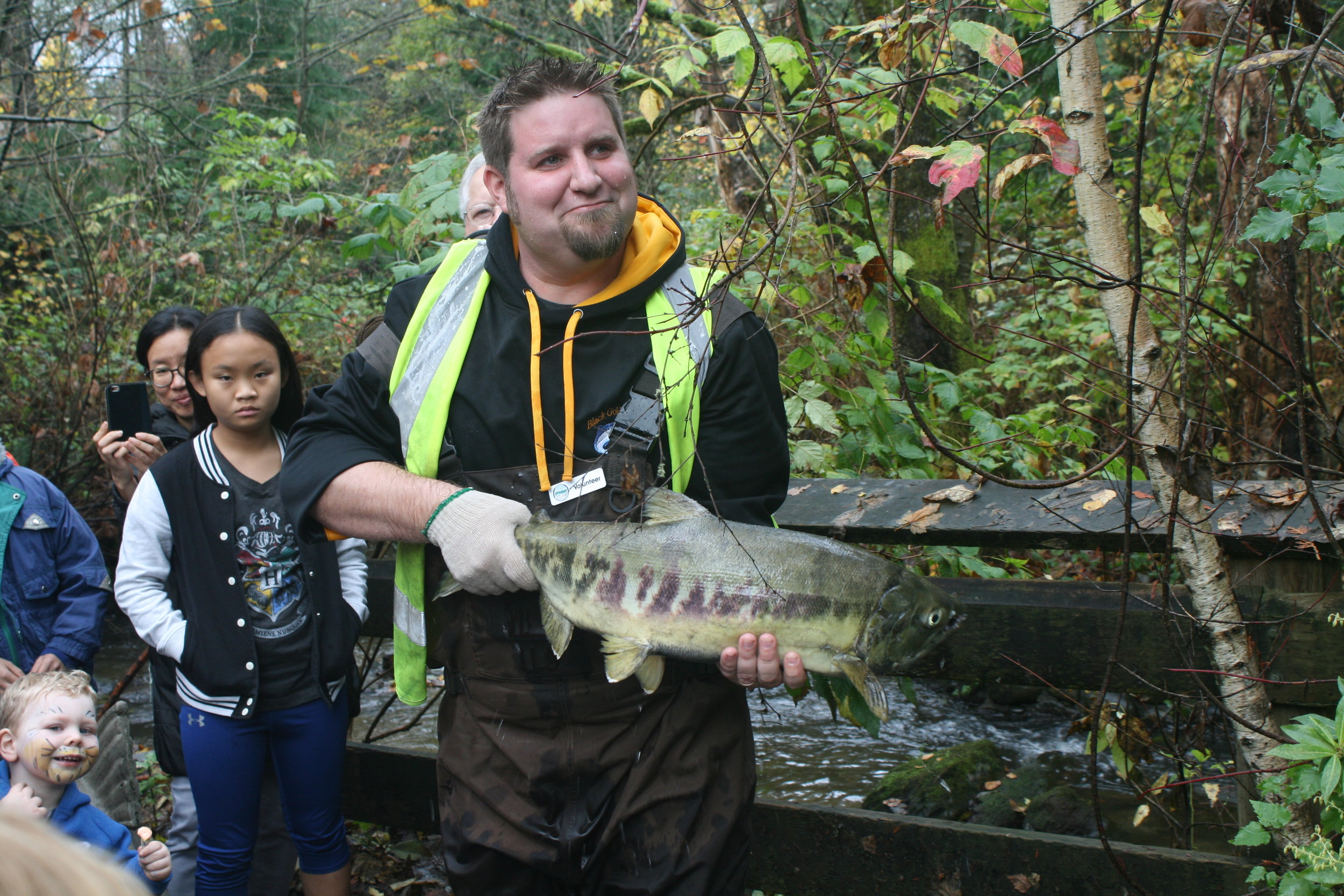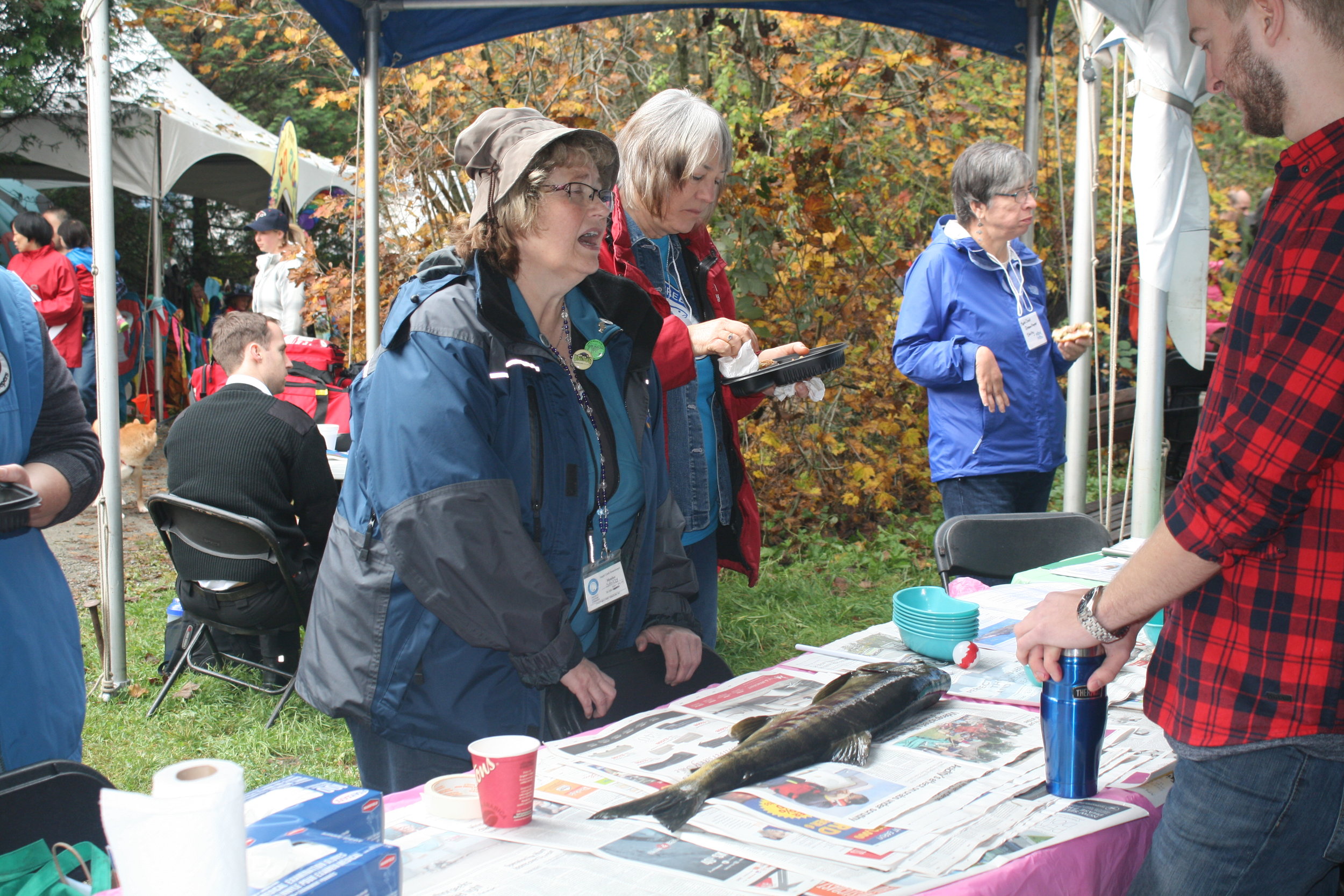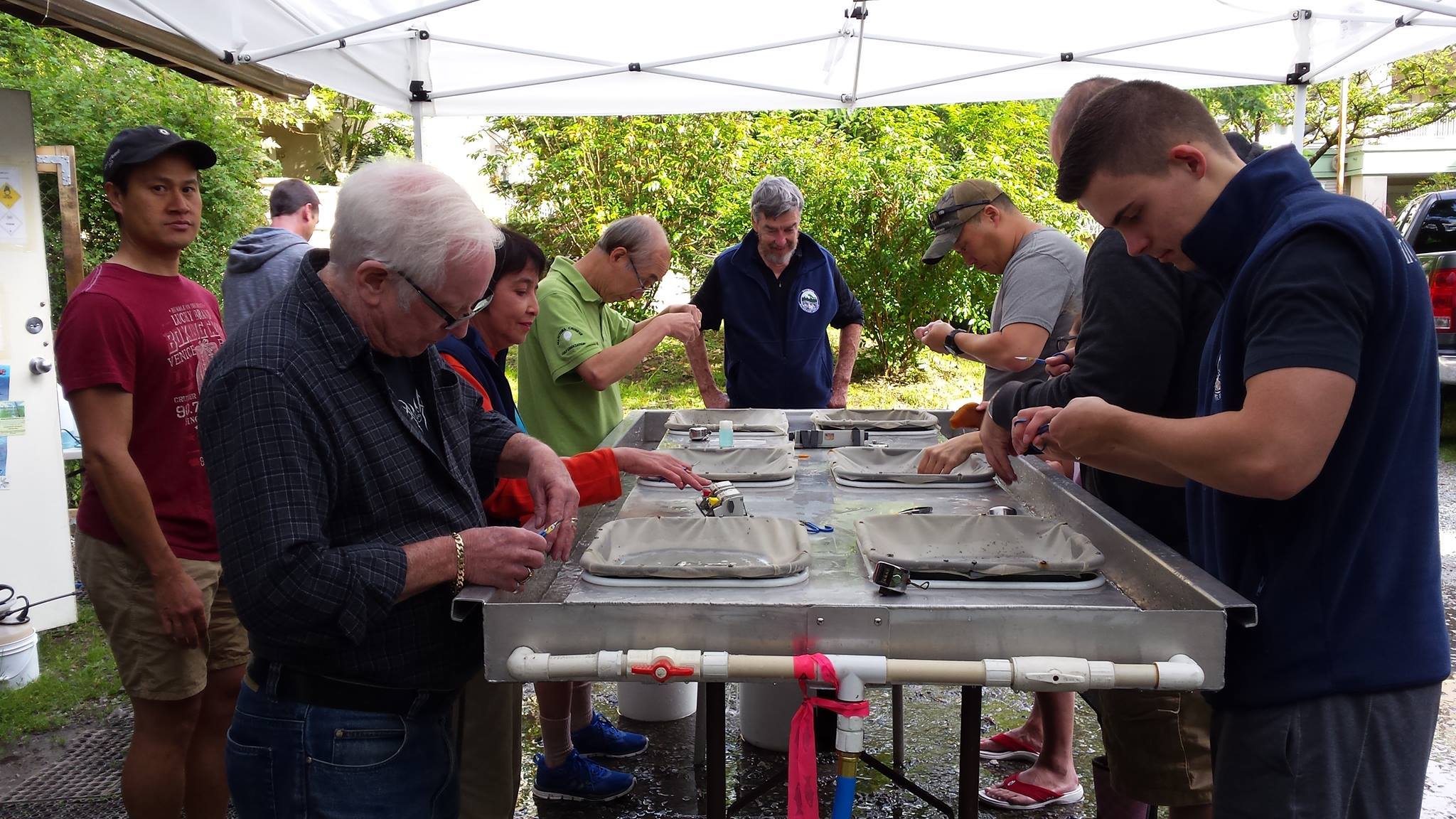Youth volunteers introduce our Coho fry to the public in front of the rearing pond at Salmon Come Home on Oct. 27 (HSWS Photo)
The positive impact of recent rainfalls provided the necessary flows for salmon to reach their spawning grounds throughout the watershed. The Salmon Come Home event on October 27 was a wonderful celebration of this remarkable species, bringing together our team, community, and sponsors to honour their incredible journey.
As we rejoice in their return, it’s crucial to recognize the challenges they face. Human and pet traffic through creek beds can disturb sensitive spawning areas, and pollution events pose significant threats to their survival. Additionally, erosion from heavy storms can release fine sediments that suffocate eggs (redds).
Let’s continue to protect these vital habitats and ensure that our salmon have a safe journey home. Thank you for your support!
Maple Creek Streamkeepers and the salmon dissection table kept so many residents engaged and educated. (HSWS Photo)
What an amazing day at the festival! So many Coquitlam residents joined Hoy/Scott Watershed Society and the City of Coquitlam to celebrate the incredible journey of the salmon. A huge shoutout to our volunteers, and our sponsors, Qualex-Landmark and FortisBC, continued support from Fisheries & Oceans Canada, Fish & Wildlife Compensation Program; and all the community groups who shared their knowledge and passion for nature.
We were truly blessed to witness so many salmon in the stream—an inspiring reminder of the resilience of nature. Together, we can continue to protect and appreciate these beautiful creatures.
Check out our photos and relive the magic! ps. We are grateful by the media visit from CityNews TV.
Etienne Siew, a former hatchery volunteer serenaded us throughout the festival. (HSWS Photo)
All rights to photos reserved to the Society
Hoy Creek Hatchery manager, Tyler Storgaard holds a live Chum salmon to show the public during the DFO Salmon Talks.
